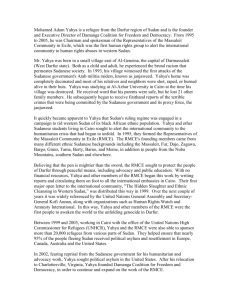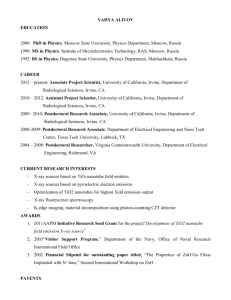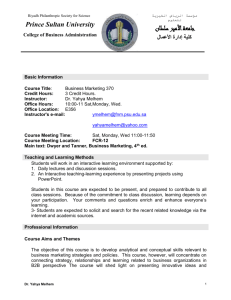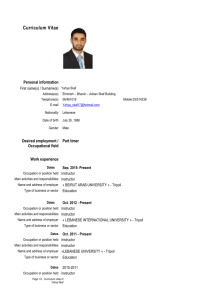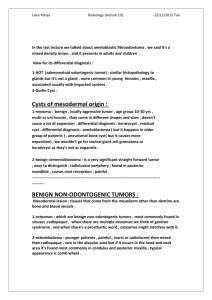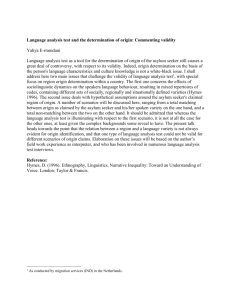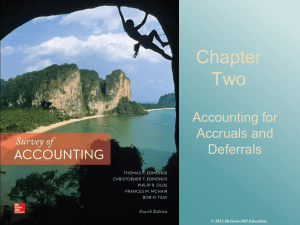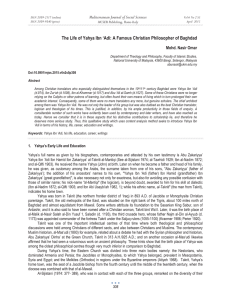What is Accounting? - Oman College of Management & Technology
advertisement
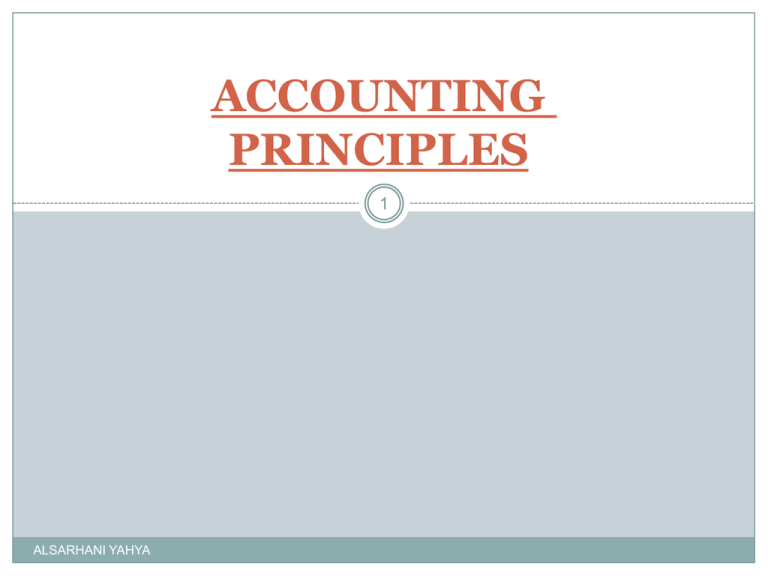
ACCOUNTING PRINCIPLES 1 ALSARHANI YAHYA CHAPTER (1) ACCOUNTING IN ACTION 2 Why Study Accounting? What is Accounting? Who uses Accounting Data? Brief History of Accounting. Distinguishing between bookkeeping and Accounting Accounting and You ALSARHANI YAHYA Why study Accounting? 3 Accounting it is very important .good accounting is mean the good sound business and investing decisions. Bad accounting can not be tolerated at the slightest hint of a company accounting improprieties, investors maybe sell their stock when the stock price will increase after they sold. ALSARHANI YAHYA What is Accounting? The purpose of accounting is to: (1) identify, record, and communicate the economic events of an (2) organization to (3) interested users. LO 1 Explain what accounting is. What is Accounting? Three Activities Illustration 1-1 Accounting process The accounting process includes the bookkeeping function. LO 1 Explain what accounting is. What is Accounting? 6 Is an information system that identifies records and communicates the economic events of an organization to interested users. ALSARHANI YAHYA What is Accounting? 7 Identifies economic events involves selecting the economic activities relevant to a particular organization. ALSARHANI YAHYA What is Accounting? 8 Records :one identifies economic events are recorded to provide a history of the organization financial activities, in recording economic events are classified and summarized. ALSARHANI YAHYA What is Accounting? 9 Communicates: to use the information to interested users financial information is communicated through accounting reports the most common of which are called financial statement. The accountants ability to analyze and interpret the reported information. ALSARHANI YAHYA Who Uses Accounting Data? Internal Users IRS Management Human Resources Finance Investors There are two broad groups of users of financial information: internal users and external users. Marketing Labor Unions Creditors SEC Customers External Users LO 2 Identify the users and uses of accounting. Who uses Accounting Data? 11 INTERNAL USERS: Internal users of accounting information are managers who (plan, organize and run a business) ,marketing managers, production supervisors, finance directors and company officers. ALSARHANI YAHYA INTERNAL USERS 12 In running a business managers must answer many important questions like: Is cash sufficient to pay bills? What is the cost of manufacturing eash unit of product? Can we afford to give employee pay raises this year? Which product line is the most profitable? ALSARHANI YAHYA INTERNAL USERS 13 To answer these question users need detailed information on a timely basis. To internal users accounting provides internal reports as: Financial comparisons of operating to choosing . ALSARHANI YAHYA INTERNAL USERS 14 Projections of income from new sales campaigns. Forecasts of cash needs for the next year. Summarized financial information is presented in the form of financial statements. ALSARHANI YAHYA External users 15 1-Investors:they are using accounting information to make decisions to buy hold or sell stock. 2- Creditors : (suppliers, bankers) they are using accounting information to evaluate the risks of granting credit or lending money. ALSARHANI YAHYA External users: 16 3- Taxing authorities : such as the (Internal Revenue Service) and they want to know whether the company complies with the tax laws. 4- Regulatory agencies : (Securities and Exchange Commission and Federal Trade Commission) want to know whether the company is operating with in prescribed rules. ALSARHANI YAHYA External users 17 5- Customers: they are interested in whether a company will continue to honour product warranties and support its product lines. 6-Labor unions: they want to know whether the owners can pay increased wages and benefits. 7-Economic planners: use accounting information to forecast economic activity ALSARHANI YAHYA Brief History of Accounting. 18 In 1494 the accounting established started and it was described a system to ensure that financial information was recorded efficiently and accurately. In the nineteenth century the emergence of large corporations a separation of the owners from the managers of business took place. As a result the need to report the financial status of the enterprise become more important to ensure that managers acted in accord with owners wishes. Also transaction between business become more complex, making necessary improved approaches for reporting financial information. ALSARHANI YAHYA Distinguishing between bookkeeping and Accounting 19 Some people think the bookkeeping and accounting are same bit its not true. The accounting process includes the bookkeeping function. Bookkeeping usually they are doing only the recording of economic events its just one part of the accounting process. ALSARHANI YAHYA Accounting involves the entire process of identifying, recording and communicating economic events. Accounting divided into: 1-Financial accounting : is the field of accounting that provides economic and financial information for external users. 2-Managerial accounting: is providing economic and financial information for manager and other internal users. ALSARHANI YAHYA 20 Accounting and You 21 How will the study of accounting help you? It should help you because a working knowledge of accounting is desirable for virtually every field of endeavor. Some examples of how accounting help other careers: 1-General management: to make a good business decisions. 2- Marketing: to make sale profitable sale the marketing people must have knowledge to know the cost and benefits. ALSARHANI YAHYA 3-Any job in finance field: it is difficult to get job in finance function without 2 or 3 courses in accounting. 4-Other jobs: a working knowledge of accounting is relevant You will need to understand financial reports in any enterprise you are associated with. ALSARHANI YAHYA 22 The Building Blocks of Accounting 23 Every profession develops a body of theory consisting of principles assumptions and standards. The fundamental business concept is followed ethical behavior. For example if you trying to carry on business or invest money if you could not depend on the individuals you deal with to be honest. ALSARHANI YAHYA If managers , customers, investors and creditors all consistently lied , effective communication and economic activity would be impossible. Most individuals in business are ethical, their actions are both legal and responsible and they consider the organization interests in their decision making. ALSARHANI YAHYA 24 Basic Accounting Equation 25 The two basic elements of business are: 1- What it owns? 2-What it owes? Any thing the business owns are (Asset) and any thing the business owes are (liabilities or owner equity) The basic accounting equation is ASSET= LIABILITIES +OWNERS EQUITY ALSARHANI YAHYA ASSETS 26 The resources owned by a business They are used in caring out such activities as production , consumption and exchange. The common characteristic possessed by all asset is the capacity to provide future service or benefits. The examples of Assets: Cash, Equipment, supplies Account receivable…. ALSARHANI YAHYA LIABILITY 27 They are the right or claims against these resources. Claims of those to whom money is owed (creditors) . Liabilities are existing debts and obligations. For example in liability: most of companies usually borrow money and purchase merchandise on credit. This obligations are called (accounts payable) ALSARHANI YAHYA Owner equity 28 The ownership claim on total assets. It is equal to total assets minus total liability ASSET – LIABILITY =OWNER EQUITY The asset of business are supplied or claimed by either creditors or owners. To find out what belongs to owners we subtract the creditors claims (the liabilities) from asset. ALSARHANI YAHYA Since the claims of creditors must be paid before ownership claims. The owner equities have two activities: increase and decrease. The investments by owner and the revenues are the way for increase the owner equities. Investments: the owner puts cash into business. ALSARHANI YAHYA 29 Revenues: are the gross increase in owner equity resulting from business activities entered into for the purpose of earning income. Generally, revenues result from the sale of merchandise the performance of services the rental of property and the lending of money. ALSARHANI YAHYA 30 However, the owner equities will decreases by drawings and expenses. Drawings: owner may withdraw cash or other asset for personal use. Expenses: the cost of asset consumed or services used in the process of earning revenue. The example of expenses( wags ,electric ,gas, water, rent, interest…). When the revenues bigger than expenses so the company have profit in net income ,but if the expenses are higher than revenues so the company have loss income. ALSARHANI YAHYA 31
